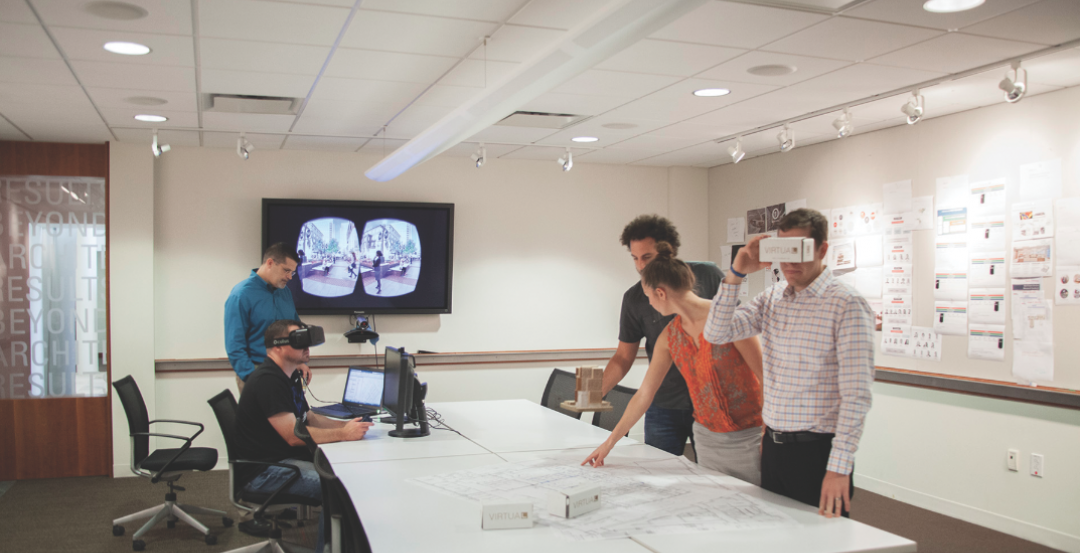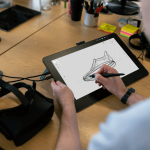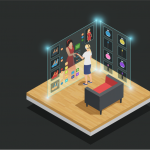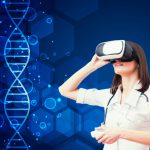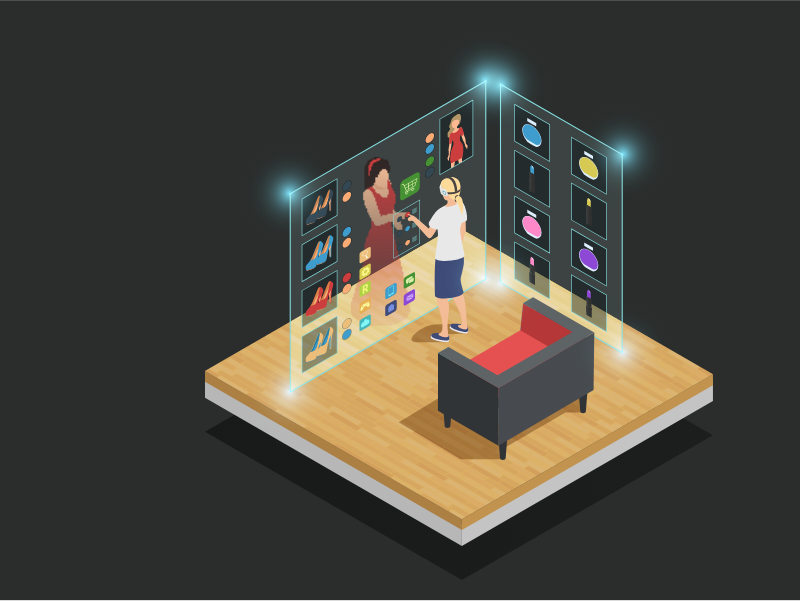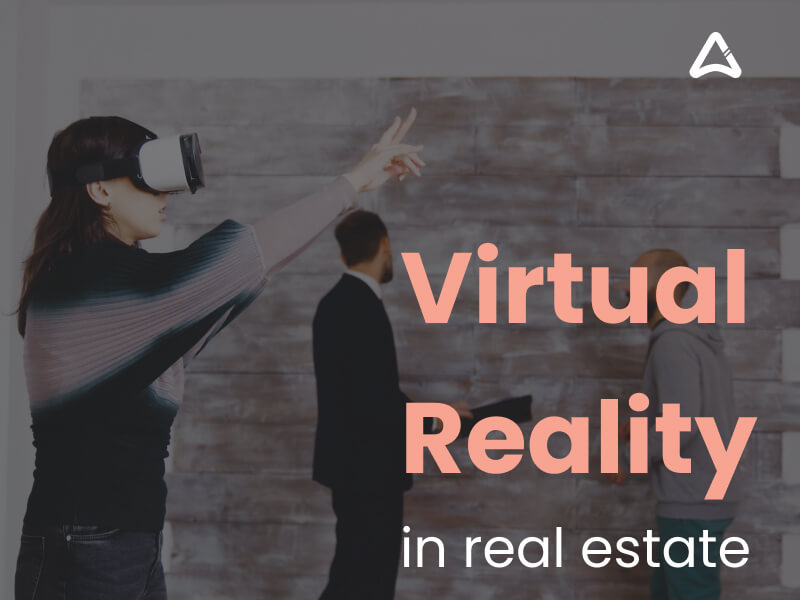A few decades ago, virtual reality was only fiction. How could we imagine that one day this and other technologies would be part of everyday life? Although today virtual reality is not part of everyone’s day today, we know of its existence and the possibility of using it in our favor. Education is one of the least developed areas in these decades. The way of teaching has not evolved as much as technology has. However, this is something that can, and should, change.
Do you want to know how and why? Then continue reading this post.
What is Virtual Reality?
The virtual reality is an interface through which technology creates a virtual environment. With visual, sound and tactile effects simulations of reality are created to make the user believe that he is in an environment that exists.
In the beginning, this technology was mostly applied in games, but new possibilities of use are discovered every time. One of them: education.
The Digital Transformation As A Holistic Phenomenon
The first step in understanding how digital transformation occurs in higher education is to see it as a macro and holistic phenomenon.
When we talk about machine learning, big data, cloud storage, hybrid teaching, active learning methodologies, and virtual secretariat, for example, we are not referring to functionalities or different or isolated approaches. Much less to aspects of academic life that do not dialogue with each other.
On the contrary, we are dealing with different manifestations of the same trend. This trend is the advancement of technology and how the structuring of higher education impacts, virtual and in-person, both administratively and pedagogically.
The Digital Transformation and its Impact on Academic Training
The knowledge revolution is changing the way more traditional education institutions see education. Any teaching institution, today, needs to offer approaches that are more aligned with the expectations of the generations that enter higher education and the labor market.
New ways of learning and teaching, interacting, performing jobs, evading doubts and achieving pre-determined results knock on the door of national and international universities.
Tablets and notebooks instead of notebooks and books; digital libraries instead of physical libraries; virtual environment replacing or complementing the class; Virtual and augmented realities revolutionize the teaching of subjects and subjects.
Knowledge changed from immutable paradigms to multidisciplinary and adaptable concepts. As also the preparation expected of a newly graduated professional who, increasingly, involves a range of behavioural skills, in addition to the techniques.
How can Virtual Reality be applied to Education?
What child does not like video games? If there are any, they must be very few. Through technology, children are transported, and despite what many say, they develop their imagination, creativity and learn. They have fun in an innovative environment and discover many possibilities.
Do not children quickly learn the dynamics of video games? They develop strategies without knowing that they are doing it and can spend a lot of time entertaining in this way. How then can traditional education compete with technology? It seems an unfair competition. On the one hand, a world full of possibilities and on the other, something monotonous.
However, technology and education do not need to be on opposite sides. They can work together, with the same goal and when so, can you imagine everything you can earn?
I give you some examples:
Travel and explore without limits
With virtual reality, it is possible to make an excursion to Machu Picchu, visit the pyramids of Egypt or take a walk through the Louvre. We can even go further, such as exploring the lunar surface for example.
What is taught in theory today, technology will allow us to do it more effectively. Thus, learning becomes more experiential and lasting, without it being a boring and tiring task.
Time travel
And how about learning history by transporting it? Thanks to virtual reality this will also be possible. Instead of watching a video about the fall of the Berlin wall, how about witnessing it?
Learning through “experience” is a unique way of not only obtaining historical data but also having other perceptions that only experience can give us.
Explore the human body
“Walking inside the human body” must be an unforgettable experience. Is there a better way to understand how our body works? Who knows, someday…
Generate empathy and instill values
Transporting us to a different reality can allow us another kind of perception of what we see in the news. The news shows us the refugee crisis, for example. But witnessing it with the help of virtual reality can be a necessary experience to humanize us more and seek a more just society.
What advantages can this technology bring for learning?
This technology can bring a lot of advantages for all stages of education, from primary to specialized training.
Faster and lifelong learning
Living an experience can facilitate learning for any student, in addition to helping to better set content.
Better development of practical activities
For many students who finish their university studies, putting into practice everything they have learned can be a difficult task. But if you have already experienced part of these routines in virtual reality this process will be much simpler.
Better skills assessment
Simulation of a true situation is the best way to assess the ability to deal with a real problem. Through virtual reality, a simulation can be done and the student’s attitude can be recorded, such as the precision to execute the task and the time it takes, for example.
Greater inclusion
Thanks to virtual reality, people with some type of disability, who are often excluded in the traditional education system, can be incorporated and developed through technology. People with some physical or intellectual limitations can learn along with any other student with full abilities.
Process automation and its impact on academic management
Just as the experience of higher education is transformed for students and teachers, the administrative area follows the same trend. Today there are innumerable tools and systems of academic management that allow managers of higher education institutions much greater control over teachers, students, flows and processes.
From the storage of information in the cloud to the virtual service to the student, all administrative flows are usually transferred to the digital sphere. The objective? Provide students with a more efficient, meaningful and dynamic learning experience.
Paperless
Getting rid of printed records, or drastically reducing their amount, is a directive increasingly present in educational institutions. Paperless is an expression that means “less paper” and describes a trend that promises to speed up slow processes and generate expenses.
Issuance of certificates, tickets and historical records, registration and re-registration, monitoring of notes and development indicators, internal and external communication and, even, online negotiation are some examples of actions expedited by an automated academic management system.
Care and safety with information
At present, an educational institution that retains traditional management accumulates an exorbitant amount of printed data, which are often stored and have no use.
This situation is inevitable – since the result of all communication processes between institutions and students are the documents – unless you adopt an automated management system.
With the new IT resources, such as cloud storage, this information becomes immediately available to principals, who go on to monitor the development of the student body by subject, course or teaching period. Besides, this systematized information gives greater support to the collaborators in terms of overcoming everyday problems and, also, help in decision making.
This approach of management with the student’s day to day increases the probability of success for both!
Improvement in retention rates
Another function impacted by the digital transformation is control over evasion and non-compliance. With the automation of processes and resources, there is greater efficiency and agility in the control of the causes and the implementation of contingency measures for these challenges.
All digitized and stored data are transformed into graphs and informative reports that allow managers to monitor student satisfaction and look for innovative ways to solve each case.
Using virtual reality, not just for distraction, can be a pretty smart decision. This fantastic resource can be used in various areas, one of them: education.
The Benefits of Digital Transformation in Higher Education
As you can see, the digital transformation in higher education is a holistic process of alignment between education, technological resources and the needs of new generations of students, as well as the labor market.
We are talking about a revolution that circulates educational institutions on two fronts: pedagogical and administrative. Pedagogical in the sense that it affects the students’ experience with the teaching provided by the institution, and administrative because it modifies processes and internal flows, which makes management a competitive advantage and makes it more apt to deal with the amount of information produced annually.
This movement, as we mentioned at the beginning of this article, does not happen in isolation. On the contrary: it manifests itself in the search for integration and harmonization among students, directors, and collaborators. Its result is to guarantee the fluidity, agility, and efficiency of all academic processes.
Digital transformation is not the future, it is the present of Higher Education Institutions. It is already affecting how knowledge is built and shared, as well as communication processes.
We know that the educational market of the present has enormous potential, largely supported by technology. Competitiveness, however, is also massive. In this scenario, understanding digital transformation and finding ways to incorporate it is a strategy to maintain the relevant institution.
Conclusion
Virtual reality can help us as a society much more than you imagine. Technology advances in giant steps while other areas do so slowly. By applying technology to other sectors such as education, for example, the results will be seen in the short, medium and long term.
The education system must use virtual reality at all levels, from primary to higher education.
